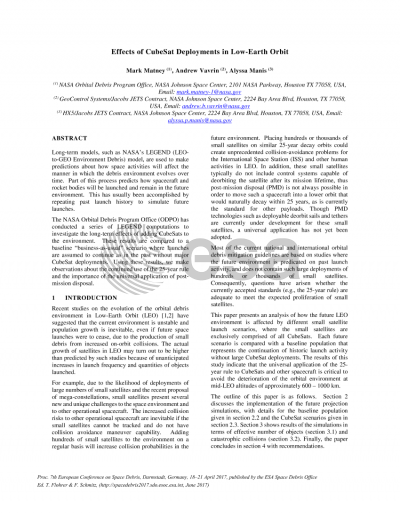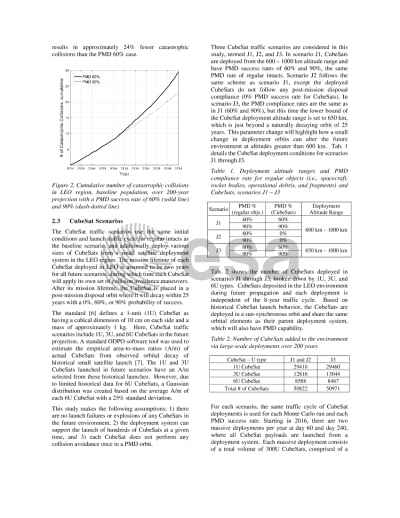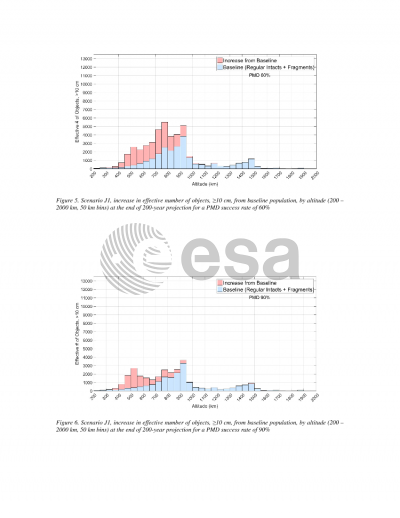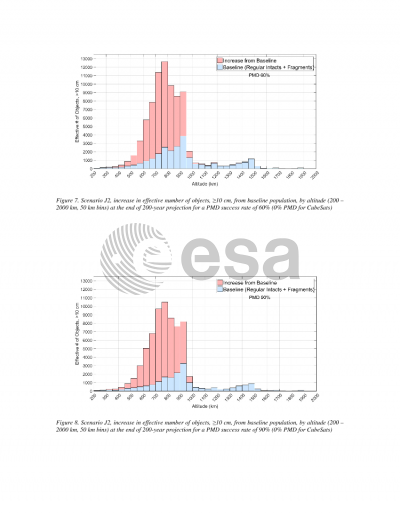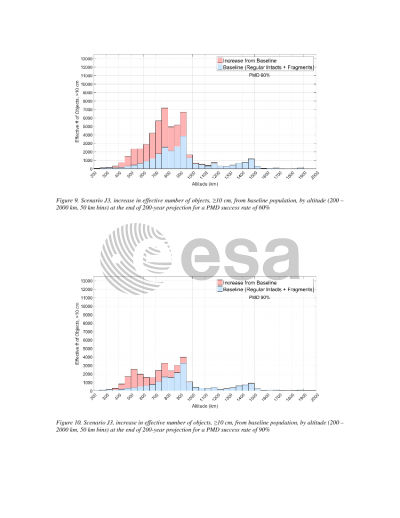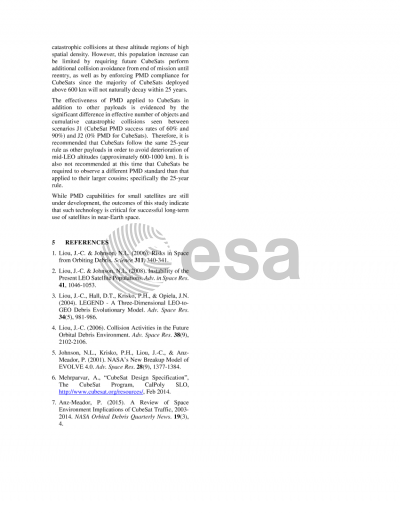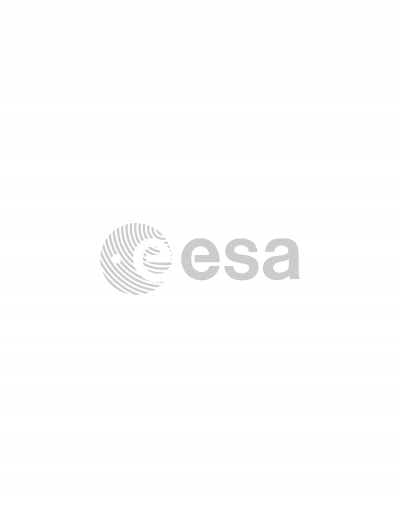Document details

Abstract
Long-term models, such as NASA’s LEGEND model, are used to make predictions about how space activities will affect the long-term evolution of the debris environment. Part of this process is to predict how spacecraft and rocket bodies will be launched and left in the environment in the future. This has usually been accomplished by repeating past launch history to simulate future launches. It was partially upon the basis of the results of such models that both national and international orbital debris mitigation guidelines – especially the “25-year rule” for post-mission disposal – were determined.
The proliferation of Cubesat launches in recent years, however, has raised concerns that we are seeing a fundamental shift in how humans launch satellites into space that may alter the assumptions upon which our current mitigation guidelines are based. The large number of cubesats, and their short lifetime and general inability to perform collision avoidance, potentially makes them an important new source of debris.
The NASA Orbital Debris Program Office (ODPO) has conducted a series of LEGEND computations to investigate the long-term effects of adding Cubesats to the environment. Several possible future scenarios were simulated to investigate the effects of the size of future Cubesat launches and the efficiency of post-mission disposal on the proliferation of catastrophic collisions over the next 200 years. These results are compared to a baseline “business-as-usual” scenario where launches are assumed to continue as in the past without major Cubesat deployments.
Using these results, we make observations about the continued use of the 25-year rule and the importance of the universal application of post-mission disposal. We also discuss how the proliferation of Cubesats may affect satellite traffic at lower altitudes.
Preview
